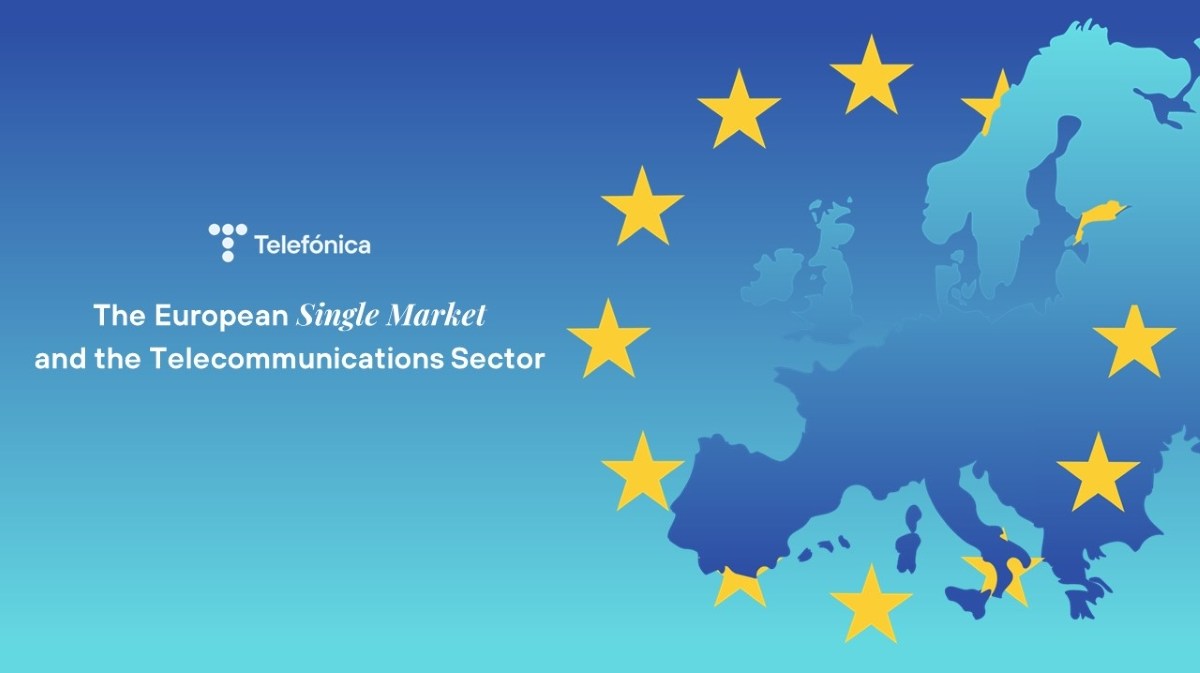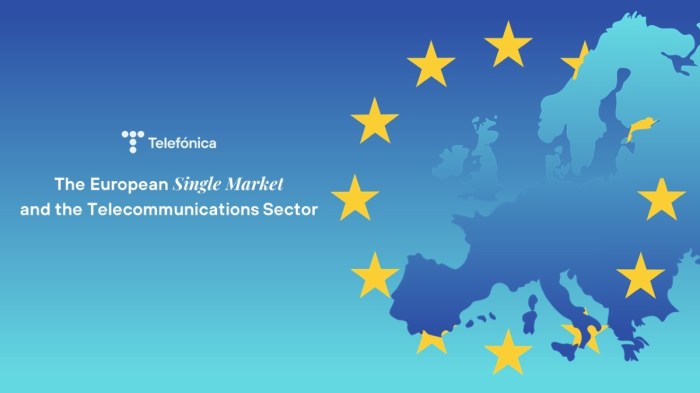This year the European Union celebrates the thirtieth anniversary of the Single Market, one of the most brilliant ideas and which has brought the greatest progress and benefits to European citizens, businesses and society. On such an important occasion, Telefónica would like to call for a return to the principles on which the Single Market was originally built so successfully, as well as to the fundamental enabling role of telecommunications operators in allowing other economic activities to develop efficiently within the Single Market.
The Single Market: achievements and challenges after 30 years
The Single Market is built on a specific geographical area formed by EU Member States and aims to ensure the free movement of goods, services, capital and people, the so-called “four freedoms”.
Originally, the main barriers to these freedoms were frontier-related, located at the borders between Member States. The removal of these border barriers was an unprecedented economic and social success, to the extent that the Single Market is the foundation of the European Union as we know it today.
However, it is not only border barriers that can hinder the free movement intended by the Single Market. Both the EU institutions and individual Member States, at their geographical level, can erect legal, administrative or political barriers to the “four freedoms” of the Single Market – barriers that are not border-based, which are less localised but equally damaging.
In a survey conducted by the European Roundtable (ERT), 86% of its members said that regulation limits European competitiveness. In line with this view, Telefónica is concerned about the growing wave of regulation resulting from the replacement of the concept of the Single Market with that of a “harmonised market”, which raises barriers different from border ones. Also worrying is the distortion of the concept of the Single Market, which is evident in the description of the Digital Single Market, even to the point of defining the structures of this market.
The Digital Single Market and its main barriers
The Digital Single Market is nothing more and nothing less than an area where the free movement of digital goods and services, and of the capital and people that make them possible, prevails, facilitating the efficient allocation of resources by European industry and society.
The Single Market does not predefine market outcomes or structures, nor, as the European Commission’s recent White Paper – How to master Europe’s Digital Transformation needs? states, a space with homogeneous supply and demand conditions, a vision that actually moves it away from the four freedoms. The virtue of the Single Market is precisely that it allows supply to adapt efficiently to demand preferences, whatever they may be.
At present, the Digital Single Market lacks relevant border barriers to the “four freedoms”. In this sense, it could be said that there is a true geographic Digital Single Market. However, barriers of a different nature to these freedoms exist : there are regulatory, administrative and political barriers.
In particular, it is necessary to draw attention to the regulatory barriers to the free movement of capital generated by the combination of outdated access regulation and a competition policy based on the number of competitors. The effect of both policies creates unviable market structures with artificial competition encouraged by regulatory privileges. This has led to a loss of value for European telecommunications operators and consequently their attractiveness to investors.
This is particularly worrying at a time of general loss of competitiveness of the European industry which lacks in investment and innovation, to which a true Digital Single Market could make a key contribution.
The telecommunications sector is part and an enabler of the Single Market
Indeed, the Digital Single Market would make it easier for European industry and society to reap the benefits of the new digital era. Connectivity is essential to ensure its smooth functioning: high quality connectivity combined with digital solutions accelerate the digital transformation of economic sectors and allow them to extend their boundaries, giving them the desirable scale. Deepening the single market for telecoms infrastructure and services will facilitate the exercise of the four freedoms in other sectors.
In order to move towards a Digital Single Market, it is essential to attract investment. Achieving economies of scale in the geographical areas where fixed and mobile networks are deployed is therefore essential to facilitate future roll-out. Moreover, the viability of pan-European digital services will depend on a robust local infrastructure, which in turn will depend on the financial health of local operators.
Fortunately, the path to this goal is clear: to revive the original principles of the single market, which gave us such excellent results at the time, and to apply them without restriction to the telecoms market.
Recommendations for moving towards a Digital Single Market in Europe
Moving towards the Digital Single Market requires the removal of legal, administrative and political barriers to the free movement of resources in the telecommunications sector. To this end, Telefónica makes the following proposals, among others:
- Reviewing regulations in the EU and promoting their removal where they hinder investment in basic networks and infrastructures. In addition, it is necessary to prevent States from fragmenting the Single Market with sectoral regulations. To this end, the EU must ensure that these local regulations do not become barriers and, where necessary, promote their removal.
- A competition policy that contributes to the strengthening of the telecommunications sector as a key enabler of the European Single Market is essential. It is necessary to ensure that competition decisions do not create exit barriers for market players by imposing remedies that create artificial competition and unsustainable market structures.
- The Digital Single Market needs a regulatory framework to free up resources to accelerate the deployment of digital infrastructure and services. Rules should therefore be simplified to reduce the administrative burdens and associated costs, including taxation.
- Radio spectrum policy is a key element within the Digital Single Market as it can facilitate connectivity, digital inclusion, innovation and economic growth. It is therefore suggested to provide certainty on the renewal of licences under reasonable conditions and to increase the harmonised supply of spectrum in low and medium frequency bands for terrestrial mobile networks.
- The preservation of a Single Market requires coordinated action to prevent and remove new unjustified or disproportionate barriers that negatively impact the “four freedoms” that underpin it. To this end, it is suggested to carry out a cost-benefit analysis in terms of the Single Market of future rules.
This is a defining moment for Europe’s competitiveness. The Digital Networks Act (DNA) can be the key tool to bring back a Single Telecoms Market and is therefore a key opportunity to put Europe on the path to long-term prosperity.








